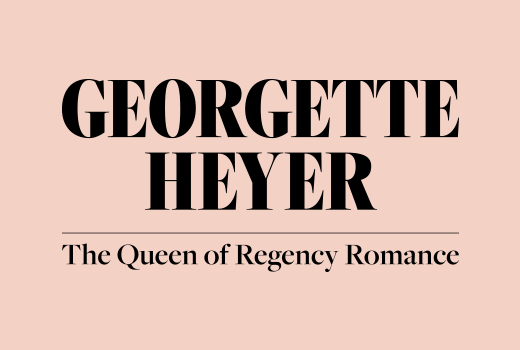Together, Ed and Rebecca create joyous storybooks filled with fun and unusual characters. Their books invite young readers to physically engage with the pictures and words they see and hear, encouraging them to sing and shout along. Ed and Rebecca’s shared affinity for how young children experience the world underpins their work and collaborations.
Their quirky, memorable characters inspire affection with their young audiences and their flair for storytelling means that their books both entertain and educate. Although the aesthetics, style, and techniques vary between books, they are always playful and vibrant. Ed and Rebecca’s works have become staples with young children and pre-schools.
Many of Ed and Rebecca’s books reimagine classic folk tales, with a fun new twist.

Chicken Little (2009) brings us a bold and colorful retelling of this well-known story. Kirkus Reviews says, “[Rebecca Emberley’s] dry wit acts as the perfect complement to [Ed Emberley’s] art, which leaps off the page, mixing colors with crazed combinations that provide the perfect balance between text and image. Ideal for reading aloud and as a visual stimulant, this title is bound to become the favored version for children and adults alike.”
The Emberleys bring their unique style to the well-known song “There Was an Old Woman Who Swallowed a Fly” in There Was an Old Monster! (2009). The splotchy purple monster’s initial snack—a tick—doesn’t agree with him (“I don’t know why/ he swallowed the tick/ ’cause it made him feel sick”), and the ants he ingests to catch the tick “had him dancing in his pants.” After downing a lizard, bat, jackal and bear, the monster feels “like he was dyin’,” so he tries to swallow a lion—an attempt that doesn’t end well. Kirkus Reviews says, “this agreeably stomach-turning tune will doubtless see heavy storytime action.”


If You’re a Monster and You Know It (2010) brings another welcome monster twist to a classic song. Children will stomp their paws, twitch their tails, snort and growl, and wiggle and wriggle along with this bright and bold picture book twist on “If You’re Happy and You Know It.” The flamboyant monsters are composed of patterned geometric shapes with tentacles, teeth, and horns galore. Publishers Weekly says, “this playful read-aloud is sure to energize story time.”
Ten Little Beasties (2011) is the perfect book to make counting fun. If there’s one thing beasties love to do, it’s dance! When one little beastie is joined by two little, three little, and more little beasties, we count UP until there’s a party on the page. But when one of the little beasties starts trouble, it’s time to start counting DOWN. School Library Journal says this book is “a feast of beasts and brilliant colors for young readers.”


The Lion and the Mice (2011) is a color-drenched interpretation of Aesop’s fable. A mouse, in colorful attire suitable for a night on the town, finds herself trapped by a caged lion in the city zoo. The mouse begs to be released and promises to help the lion one day. The lion is skeptical but releases her nonetheless. Later that night, the mouse returns with mouse friends – as spiffily attired as she herself – and together they unlock the lion’s cage and prove that “little mice can be big friends.” Kirkus Reviews says, “Aesop’s lion and mouse (or mice, as this case has it) have never looked more stylish … fantastic visual fun.”
Filled with jaunty humor and sparkling illustrations, The Red Hen (2012) is an eye-popping take on the classic story of Red Hen and her adventures in baking. Publishers Weekly says, “the Emberleys present a stylish take on a well-known fable. Shapes and colors collide playfully in hyperbolic collages—the animals’ crazed, mismatched eyes alone should elicit giggles.”


The Ant and the Grasshopper (2012) is reimagined by the Emberleys into a joyful, imaginative interpretation. Publishers Weekly says, “While maintaining the archetypes of the hardworking ant and laid-back grasshopper, the Emberleys transform Aesop’s fable about preparedness into a joyful celebration of community and music with a Cajun flair.”
Following The Lion and Mice, the Emberleys bring stylistic verve to a second mouse-centric story with Mice on Ice (2012). Bundled in bright winter gear, a group of rodents with kaleidoscope-like eyes straps on skates and takes to gliding on the local pond. Soon the curves and loops they’ve etched in the pale blue ice form the outline of a cat that comes to life and joins in the skating. Kirkus Reviews says this book is “an accessible, inviting title for brand new readers.”


The Emberleys use their trademark style to put a spin on the oft-loved nursery rhyme The Itsy Bitsy Spider (2013), creating a design virtually exploding with riotus color. Midwest Book Review says this is “a short but sweet read-aloud storybook, perfect for parents and children to share, as long as none of them have arachnophobia!”
With The Crocodile and the Scorpion (2013), Rebecca and Ed Emberley offer a sprightly new twist on another classic tale with colorful artwork so bold and bright it snaps off the page. The narrative is infused with humor, introducing the protagonists in less than flattering terms: “They both had brains no bigger than a pebble, which did not serve them very well, as you will see.” Neither has any friends, since the scorpion is “always stinging things,” the crocodile is “always biting things,” and their victims “seem not to like that.” Can they make it across the river together? Either way, Publishers Weekly says “there’s plenty of fun to be had.”


Spare Parts (2015) is a heartfelt tale of second chances and robot love. Rhoobart is tarnished and tattered and, worst of all, his heart’s broken. He’ll have to go to the Spare Parts Mart, dig through their parts, and find a new heart. But then he meets Sweetart, who has her own ideas about broken hearts, “You just need a jump start!” Publishers Weekly says that the “mechanized, industrialized world is weirdly beautiful and inventive, composed with a saturated palette and graphic elements in the shapes of jagged scrap, loose gears, and other flotsam.”



